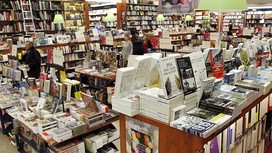Henry Mance, Media Correspondent
Mark Dawson used to write 3,000 words a day: half on his commute into London, and half on the way back home. The cramming has paid off. Last year, Mr Dawson earned a six-figure income from his books — and gave up his day job as a lawyer to write full time.
Unusually, however, the success of his writing career came without the help of a traditional publishing house.
Mr Dawson’s first two novels — published by Macmillan over a decade ago — sold fewer than 700 copies. His latest titles, both of which were self-published via Amazon and other platforms, have sold 150,000.
Self-publishing, once seen as an exercise in vanity, has become a viable economic enterprise for authors of ebooks. Nearly 460,000 titles were self-published globally in 2013, up fivefold in five years, according to Bowker, the research group. The industry is “evolving from a frantic, wild-west-style space to a more serious business”, it says.
Scott Pack, a publisher at Aardvark Bureau who used to work at HarperCollins, believes the sector has transformed the industry. “It has dramatically changed the publishing landscape,” he says. That growth has caused ructions over whether publishing houses are still the best filters and marketers of quality titles. “I call it a civil war,” says Ed Nawotka, editor of Publishing Perspectives, an industry magazine.
The biggest publishers — including Penguin Random House, part-owned by Pearson, parent company of the Financial Times, and HarperCollins, which is owned by News Corp — report hundreds of millions of dollars in annual operating profits, at margins of 10-15 per cent.
However, every part of the publishing process can now be replicated and managed by authors themselves. Mr Dawson has built a team of advance readers — about 500 people who agree to send feedback on each book, in exchange for a free copy — and a mailing list of 10,000 people.
Self-published works account for 40 per cent of author royalties generated by ebooks on Amazon, according to data compiled by author Hugh Howey. By contrast, the Big Five publishers deliver 35 per cent of ebook royalties. (The figures exclude physical book sales and advance payments to authors.)
Much of this is down to Amazon, the world’s largest bookstore and the pioneer of self-publishing. It allows authors to publish digital and physical titles, and to record audiobooks to be distributed on its platform, Audible.
Authors published 186,000 physical books using Amazon’s CreateSpace in 2013, according to Bowker research — more than twice as many as the next most popular platforms, Smashwords and Lulu Enterprises.
Self-publishing has proved a launch pad for Amazon to offer authors advances, and to market their finished products. The ecommerce group now has 14 imprints, from Thomas & Mercer (thrillers) to Waterfall Press (Christian books).
“Amazon is using self-publishing as a bludgeon to pummel publishers,” says Mark Cater, founder of rival platform Smashwords, which has also felt the effects of competing with the technology group. “For Amazon to succeed . . . it doesn’t need to take away 100 per cent of publishers’ revenues. If it can take away 10-20 per cent, it undermines their business model.”
One of Amazon’s advantages is that it integrates publishing and retailing. It offers incentives to those authors who sell their books exclusively on its site.
“Clearly making it exclusive to Amazon is better for us,” says Darren Hardy, the head of Amazon’s self-publishing arm in the UK, who added that this is not compulsory for authors.
At the same time, bookstores such as Barnes & Noble, the US chain, are still refusing to stock Amazon’s print books, meaning that authors who pledge exclusivity to Amazon will sacrifice a significant part of their audience.
With physical bookstores proving resilient, some of publishers’ existential fears have lifted. “Two years ago panic was a rational reaction. Now I don’t think it is,” says Mike Shatkzin, a publishing consultant.
Instead of panicking, publishers are trying to adapt. They are providing authors with more information on sales, belatedly following Amazon’s lead.
Authonomy, a site owned by HarperCollins, also aims to circumvent the traditional process for getting publishing contracts: writers upload their work, readers post reviews, and each month five manuscripts are selected for review by HarperCollins editors. Some, such as romantic comedy writer Kat French, have won publishing contracts.
Other publishers now offer services to authors looking to publish their works. Penguin paid $116m for Author Solutions, which operates a variety of self-publishing imprints. Author Solutions has worked with 180,000 authors, but these have only published an average of 1.25 books, suggesting a high failure rate.
Critics say that Authors Solutions’ prices — which include $1,200 for a web-optimised press release — are excessive. The company faces a class auction lawsuit in the US, where it is accused of failing to pay royalties, introducing errors into books and charging for services that “fail to deliver what they promise”. The company denies wrongdoing.
Authors’ services are testament to how the publishing process no longer requires a middleman.
But traditional publishers still have advantages. One is their international reach: even Mr Dawson uses an intermediary to sell his books in Germany, a market he does not know.
Another is sheer efficiency. “If Hilary Mantel chose to self-publish her next book, she would still sell hundreds of thousands,” says Mr Pack, formerly of HarperCollins. “One of the reasons she doesn’t is the time factor. She wants to write.”
Copyright The Financial Times Limited 2015.
See online: Books industry divided over new era of self-publishing

